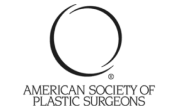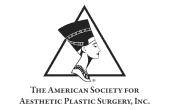
As the most popular plastic surgery in the United States, breast augmentation is performed for both cosmetic and reconstructive purposes. While it may be extremely popular, it is also one of the most misunderstood surgeries. Here are six common myths that many individuals considering breast augmentation often have.
Breast Implants Are Linked to Cancer
Multiple studies have been performed and none of them have found a link between breast implants and cancer. The FDA did have some concern regarding a very rare form of cancer (anaplastic large cell lymphoma) and breast implants, but no definitive link has been proven and only 60 cases of this cancer have been reported worldwide.
They do, however, suggest women watch for pain around the implants. If you do feel any pain on, under, or near the implant, see your plastic surgeon to make sure there is no problem with a rupture or capsular contracture.
Fasting Before or After Surgery Helps You Heal More Quickly
Some women believe that to aid healing following a breast augmentation, it’s important to cleanse the body of any toxins. As a result they go on a cleansing diet, such as the Master Cleanse diet, before or after their procedure. This diet supposedly removes toxins by having you switch to a liquid-only diet consisting of lemonade, salt water, and herbal tea for 10 days.
The reality is that this diet can lead to electrolyte imbalances and malnutrition. Some of the ingredients in the different drinks can also impede the blood’s natural ability to clot. You should stop following any cleansing diet at least two weeks prior to your breast augmentation and follow a healthy, balanced diet both before and after surgery.
A Mammogram is Going to Rupture Your Implants
While it is true that some women have had their implants rupture during a mammogram, the location does make a huge difference. The ideal placement for breast implants is below the muscle. First, this reduces the risk of having the implant block your physician’s view of the breast tissue. The muscle also helps protect the implant from the pressure of the mammogram machine.
The risk is also lessened because many physicians are using special techniques to provide mammograms to patients with breast implants. To reduce your risk, make sure that your mammography technician knows that you have breast implants.
People Are Going to Know You’ve Had a Breast Augmentation
View these before and after pictures of women who have undergone breast augmentation. Do these breasts look fake or unnatural to you? Provided you choose a skilled plastic surgeon and do not go for a size that looks unrealistic, your breast augmentation will not look unnatural. Other factors, including implant type and position, can also impact just how natural your result is so be sure to discuss these factors in detail with your surgeon prior to your surgery.
You Must Have Implants Replaced Every Decade
It used to be suggested that women have their implants replaced every ten years due to worries of ruptures and leaks. This is no longer the case because MRIs now help plastic surgeons detect leaks. If there is no leak, there is no reason to undergo the invasive surgery required to remove or replace implants.
You Will Never Breastfeed Your Future Children
Many women fear that breast augmentations will impede their ability to breastfeed their children. This is not the case. Providing your plastic surgeon does not cut into the mammary glands, you will be able to breastfeed. Tell your surgeon that you do not want nipple incisions and ask for the implant to be placed under the muscle.
Dr. Robert Kessler is a board certified plastic surgeon with many years of experience in breast augmentation. After training in the U.S. Air Force and the University of Texas, Dr. Kessler served as a Professor of Surgery until he left to open his own practice in Newport Beach, California. Read more about Dr. Kessler’s training and then schedule a breast augmentation consultation with the Newport Beach plastic surgeon by calling 949.644.6544.






